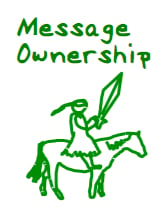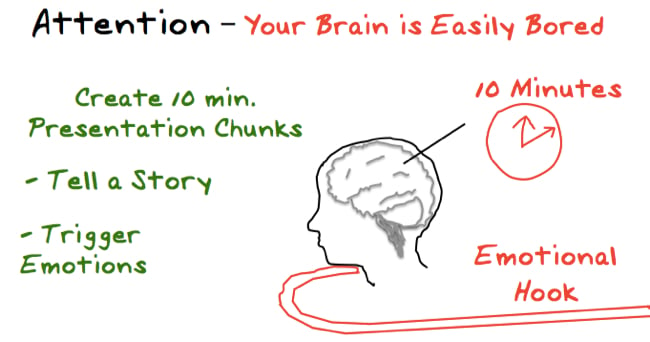Brain Rules
I've just finished reading
Brain Rules, by John Medina. It's an interesting and easy read and has a whole lot of insight on how we perceive and process information. This book could have easily been entitled "Presentation Rules" as it covers important
visual perception concepts relevant for salespeople making presentations in PowerPoint.
Here are few relevant points:
- The typical PowerPoint slide presentation has 42 words per slide.
- Words and orally presented information suffer in comparison to the use of images;
- If information is presented in bullet form with oral comment, typically 10% is remembered after 3 days
- Simply add a picture and recall goes to 65%
- In one study, subjects were shown 2500 images for 10 seconds each and could recall 90% of them within several days and were able to remember 63% of them one year later.
- The brain is doing orders of magnitude more work to get the meaning from a sentence than a picture - words are in effect lots of small pictures that the brain needs to reconstruct and sequence to derive meaning from.
- Pictures are stored in the brain as complete entities and available for instant recall. You don't have to construct an image of a clock-face nor a light bulb in your mind to recognize it, mere mention of them conjures the image that is already stored in your brain - so use more images.
- Stories that evoke strong emotions at the time of the learning help with the encoding of that learning in memory and with the transfer of information from short-term memory to long-term memory.
- The brain/mind is easily bored.
- You have 30 seconds at the start of the presentation to hook your audience.
- A hook is a story or anecdote to engage the audience emotionally.
- If you haven't engaged them by this time, then you are sunk as they will begin to occupy their mind with other things and pay scant attention to you and your presentation.
- You should structure your presentation in 10 minute chunks, because after 10 minutes the mind begins to wander. At the end of the 10 minute chunk we need to use another hook to re-engage the audience for another 10 minutes.
Take-aways:
- If you want your big idea to be remembered, then create a simple images to convey it.
- Structure your presentation into 10 minute content chunks and tell brief stories for 30 seconds every 10 minutes to re-engage your audience.
Visual Storytelling Webinar
Relevant ideas from Brain Rules have been incorporated into a new visual storytelling webinar published in late December 2012, entitled "Your PowerPoint Presentations Suck - and what you can do about it", and I invite you to view it.
This Webinar consists of the three 10 minute content chunks,
- Visual Perception
- Storytelling Basics
- An introduction to visual storytelling.



